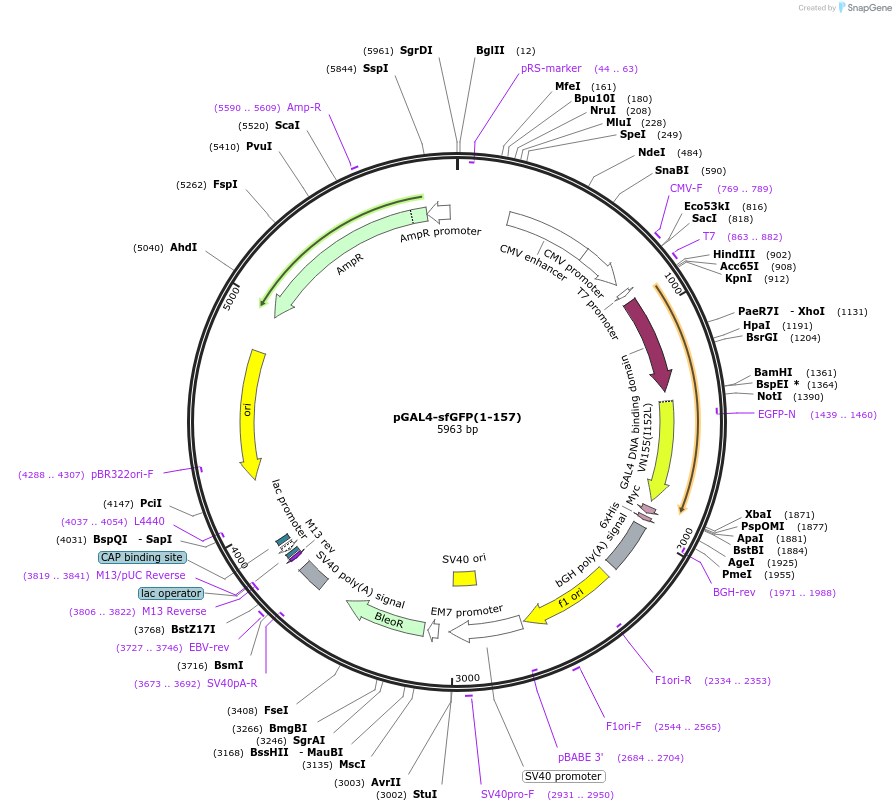pGAL4-sfGFP(1-157)
(Plasmid
#220743)
-
PurposeGAL4-sfGFP(1-157) construct expression in mammlian cells.
-
Depositing Lab
-
Sequence Information
Ordering
| Item | Catalog # | Description | Quantity | Price (USD) | |
|---|---|---|---|---|---|
| Plasmid | 220743 | Standard format: Plasmid sent in bacteria as agar stab | 1 | $89 | |
Backbone
-
Vector backbonepNIR-FbGFPY58/C-JIP
-
Backbone manufacturerAddgene #184684
- Backbone size w/o insert (bp) 5006
-
Vector typeMammalian Expression
Growth in Bacteria
-
Bacterial Resistance(s)Ampicillin, 100 μg/mL
-
Growth Temperature37°C
-
Growth Strain(s)DH5alpha
-
Copy numberHigh Copy
Gene/Insert
-
Gene/Insert nameGAL4-sfGFP(1-157)
-
SpeciesSynthetic
-
Insert Size (bp)963
- Promoter CMV
Cloning Information
- Cloning method Restriction Enzyme
- 5′ cloning site KpnI (not destroyed)
- 3′ cloning site XbaI (not destroyed)
- 5′ sequencing primer CMV-F
- 3′ sequencing primer BGH-R
- (Common Sequencing Primers)
Terms and Licenses
-
Academic/Nonprofit Terms
-
Industry Terms
- Not Available to Industry
Trademarks:
- Zeocin® is an InvivoGen trademark.
Depositor Comments
To make GAL4 fusion with sfGFP(1-157), GAL4 was amplified from a pQP-T2A plasmid (Addgene #102583) and inserted into a pcDNA3.1 plasmid, containing the 15 aa-long linker (Gly3SerGly4SerGly3SerGly2) (Addgene #184684) using KpnI/BamHI restriction enzymes, and sfGFP(1-157) was inserted using NotI/XbaI restriction enzymes.
These plasmids were created by your colleagues. Please acknowledge the Principal Investigator, cite the article in which the plasmids were described, and include Addgene in the Materials and Methods of your future publications.
-
For your Materials & Methods section:
pGAL4-sfGFP(1-157) was a gift from Vladislav Verkhusha (Addgene plasmid # 220743 ; http://n2t.net/addgene:220743 ; RRID:Addgene_220743) -
For your References section:
Destabilized near-infrared fluorescent nanobodies enable background-free targeting of GFP-based biosensors for imaging and manipulation. Barykina NV, Carey EM, Oliinyk OS, Nimmerjahn A, Verkhusha VV. Nat Commun. 2024 Sep 6;15(1):7788. doi: 10.1038/s41467-024-51857-x. 10.1038/s41467-024-51857-x PubMed 39242569



